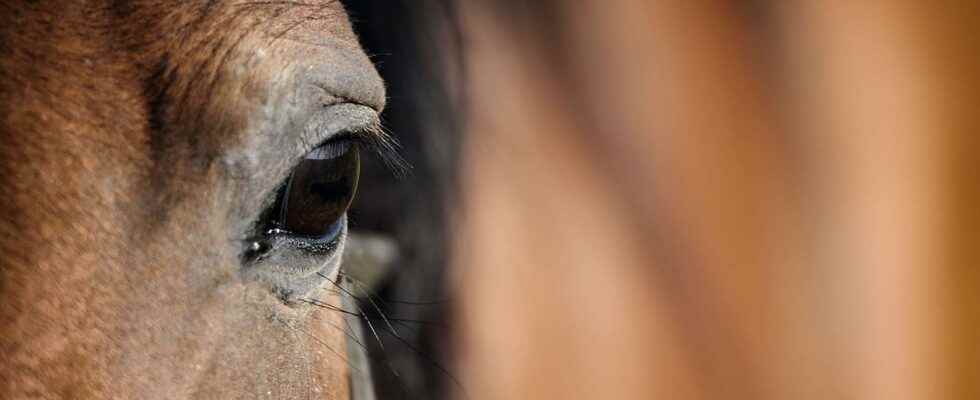“Bêtes de science” is like a collection of stories. Beautiful stories that tell the living in all its freshness. But also in all its complexity. A parenthesis to marvel at the treasures of the world. For this new episode, let’s take a look at one of those closest to us: the horse.
You will also be interested
[EN VIDÉO] Animal intelligence: the elephant would be aware of his body An Asian elephant has brilliantly passed an intelligence test that a two-year-old fails: you can’t pull a mat if you’re on it. Carried out by the Think Elephants International association, the experiment shows that the elephant is aware of its own body, as the mirror test also shows. A rare ability in the animal world.
The horse may be “The noblest of conquests” of humanity. For millennia, it has evolved alongside us. He lends us his strength where we need it. In the fields, to tow agricultural equipment. And on the roads, to take us far away. In the Middle Ages, he was the faithful steed that charged at a gallop. Today, he participates in pet therapy sessions which help us regain some functions. physical extinct. Or to restore lost confidence. By relying on specific skills that he has perhaps developed in contact with people. Social skills that will be of particular interest to us today.
Because being intelligent is not just knowing how to count or understanding the theories of physics. Knowing how to use a tool or implement strategies. Being smart also means knowing how to read other people’s emotions and understand their intentions. And concerning the horse, the first thing to note is that he lives in a group. Some horses form family groups. The famous “harems” in which we find a stallion, his mares and young horses. Single males, too, live in groups. While waiting to be able to constitute their own harem.
Within these groups, horses know how to forge complex social relationships. Relationships at several levels. A bit like our families come together in communities, then in cities and countries, for example. While keeping a certain independence. The groups of horses may thus be brought together to form herds in which the groups still retain their unity. Thus, the largest harems occupy a central place while groups of single horses are confined to the periphery.
Feel and share emotions
But that’s not all. The horse is also capable of feeling emotions. They can be read on his face. Ethologists teach us that an advanced upper lip can, for example, express a very positive emotion. One eye wide open and commissures pulled, throwing appearing teeth can mark discomfort.
And the horse also knows how to share emotions. This is what scientists call the emotional contagion. And they observed it in horses that they offered to … watch movies. The first showing a trainer grooming a horse. The second presenting a veterinarian in the process of lavishing unpleasant care on another horse. Not only the horses were shown captivated by these cinema sessions. But they also had theair to share the emotions of the horses on the screen. Showing signs of pleasure and a calmed heartbeat from the first movie. And signs of stress and an accelerated heart rate against the second. Proof of what researchers qualify as advanced representation capacity for this animal which seems to know very well how to interpret what is happening … on a screen. A good proof also of the marked sensitivity of the horse to the emotions of these congeners.
Put yourself in the shoes of a human
To our human emotions too. Address a horse in anger and it will spontaneously respond with negative emotion. More surprisingly, address him in a cheerful tone while adopting a facial expression that betrays anger and he will be left in awe of the incongruity of the situation. Enough to show that the horse has a very precise representation of our human emotions.
In other experiments, researchers have also shown that the horse can recognize our faces. Differentiate them from strangers in simple photos. It even has a good memory of those faces. Since he is still able to identify people he met more than six months ago.
But then, could the horse prove to be capable of taking a person’s point of view? An extremely complex capacity. Long reserved for humans – over four years. Maybe a few great apes. Even the dog. But researchers now believe that the horse is capable of it as well.
Put a horse in eye contact with two people. Let’s call them Juliet and Marie. A third person, Jean, hides food in a bucket, then closes it with a lid. All in full view of the horse and Juliet. But in hiding from Marie. Well, imagine that the horse, realizing that he cannot open the bucket himself, goes spontaneously ask for help – it is already a sign ofintelligence – to … Juliet. Not to Marie. So ? Not so stupid, the horse!
Interested in what you just read?
.
fs11
